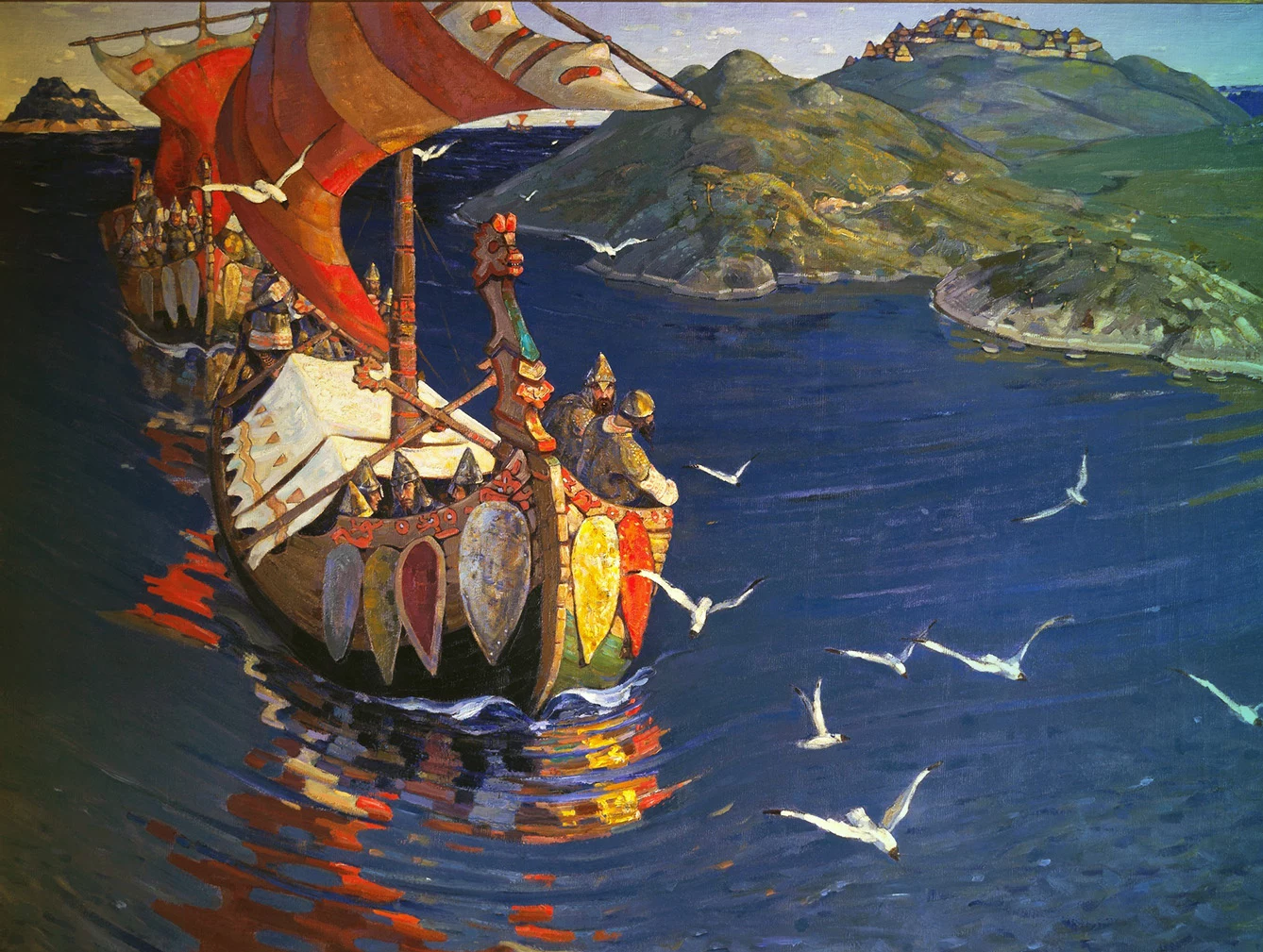In our romantic vision of the Vikings, they are fierce warriors and seafarers, establishing their dominance across the ocean and making ends meet by pillaging neighboring tribes. But it’s not just transatlantic trade that made them influential in history. One of their more lasting legacies lies in the colonization of Central Europe and the development of one of the earliest north-south trade routes in the area. And yes, sailing skills had a lot to do with that.
Varangian colonization: the untold story
Although it’s not the part of the story that is usually told, the creation of countries in Central Europe did not arise because of the democratic impulse of societies, nor was it, to a large extent, strictly thanks to the export of ideas on civilization from the West. Although the latter was an important factor, many others made Central Europe as culturally rich, original, and diverse as it is today. What else was influenced by the Viking route from Baltic to Black Sea?
In the 9th and 10th centuries, Varangian tribes (or Vikings as they were later called) turned to Baltic areas in their regular putting-food-on-table pillage tours
One of the factors was colonization from the North. In the 9th and 10th centuries, Varangian tribes (or Vikings as they were later called) turned to Baltic areas in their regular putting-food-on-table pillage tours. They moved from the North on boats into the rivers and traveled upstream through what is now Estonia, Latvia, and Lithuania.
Fierce warriors as they were, they pushed Slavic tribes away from the territory surrounding the rivers and further into the continent as they developed and explored the possibilities of river navigation. It didn’t take long for them to establish an entire network of inland waterways connecting north with south. The most essential routes included the Neva River, Lake Ladoga, the Volkhov River, Ilmen Lake, and the Lovat River.

This set of rivers in the northeast can be easily connected to the Dnieper River, perhaps the most important river of Eastern Europe, which flows through modern-day Ukraine. And the Dnieper leads directly to the Black Sea. This allowed trade (especially slave trade) with the Byzantine Empire, hence the route’s name – the “Route from the Varangians to the Greeks” (the Byzantine Empire has, in a way, Greek roots).
Ruthenia: the Viking invention
The Slavs called these Varangian tribes’ Rus,’ a word of unknown origin, perhaps Finnish. Therefore Ruthenia, locally called Rus, was a country of Viking origin. They had to maintain a stronghold there, as the Dnieper River used to have rapids (which were only relatively recently destroyed under communist rule), which required portage of boats. And that, in turn, made Varangians vulnerable to attacks by local tribes.
But the Varangian trade route also had to be fortified in the North. So, Viking excursions were also an important factor in settlement of the current Baltic countries. The last country to Christianize only in the 14th century, Lithuania put its foot in the doorway to becoming an empire itself. And quite soon, by the time it became a Christian and Polish ally, it almost reached Moscow.
History may look like the continuity of military expansions, but it begins with trade routes more often than not. Rivers in the Baltic area were largely responsible for the creation of modern Central and Eastern Europe.








In July 1992, I read the Robert Graves version of “The Greek Myths” and references to the “Amber Trade Routes from the North.”
I was on Saramma Island, Estonia, on my way back to Latvia, an abundanct Amber source, when I read the passage and pondered the available routes.
In Riga, a week later, I came across a crew member from a Viking Longboat reproduction, sailing and rowing, no engine, from Sweden to the Black Sea via Dauguava River to Belarus and a short overland portage to the Dniper River and into Ukraine.
“An ancient Viking trade route.”